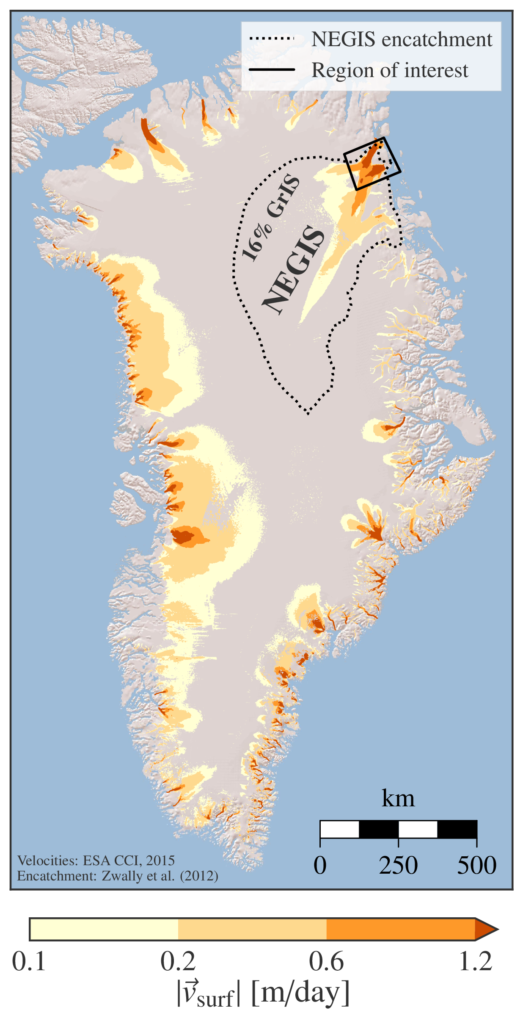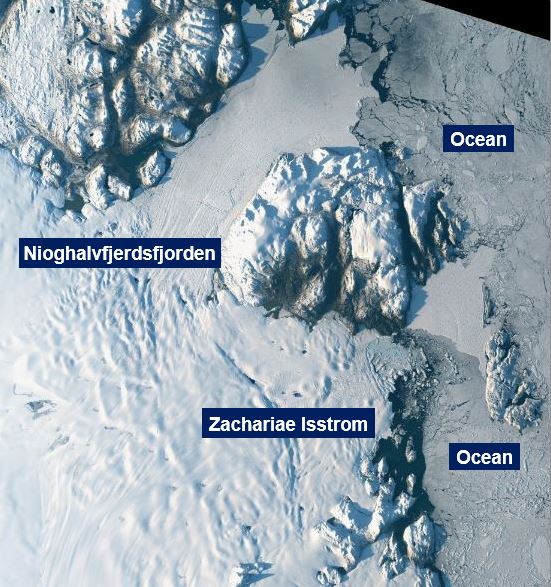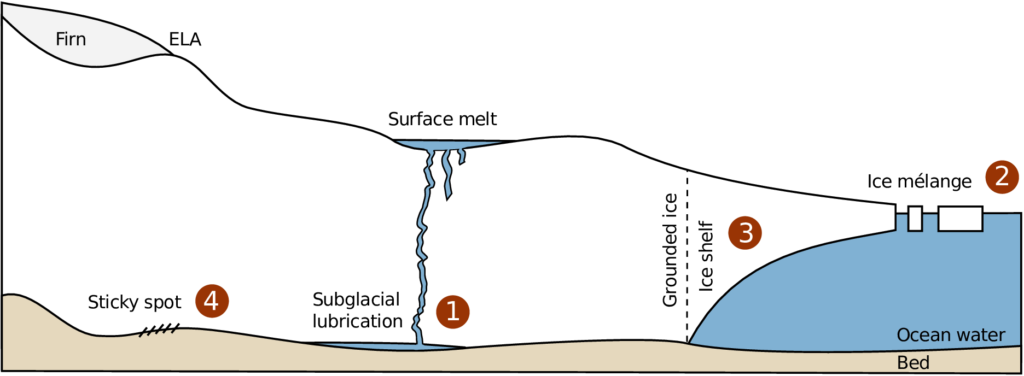PhD Nicholas Rathmann is the lead author of a new article on “Highly temporally resolved response to seasonal surface melt of the Zachariae and 79N outlet glaciers in Northeast Greenland” published in Geophysical Research Letters. Below a short description of the main findings. You can find the full paper here.
The northeast Greenland ice-stream (NEGIS) drains 16% of the Greenland ice sheet, holding approximately 1m of sea level rise equivalent, but its response to a warming climate is poorly understood, partly due to its remote location. Now, a team of researchers headed by ice2ice PhD Nicholas Rathmann part of the European ice2ice project have published a study in Geophysical Research Letters where they identify which processes control the present-day mass loss from this less understood region. By using surface images taken every 12 days over NEGIS from one of the newest generation European Space Agency (ESA) satellites, Sentinel 1-A, the researchers derived state-of-the-art surface velocity maps in collaboration with ESA’s climate change initiative project to study the seasonal behavior of the NEGIS terminus region.
Now, a team of researchers headed by ice2ice PhD Nicholas Rathmann part of the European ice2ice project have published a study in Geophysical Research Letters where they identify which processes control the present-day mass loss from this less understood region. By using surface images taken every 12 days over NEGIS from one of the newest generation European Space Agency (ESA) satellites, Sentinel 1-A, the researchers derived state-of-the-art surface velocity maps in collaboration with ESA’s climate change initiative project to study the seasonal behavior of the NEGIS terminus region.
Combined with computer models of the ice flow and the present-day atmospheric state, the researchers found that future contribution to sea level rise from this region might be significantly effected by a warming atmosphere, but also raises further questions about the moderating effect sea ice mélanges might have – i.e. the composite “soup” of sea ice and calved ice bergs.
Moreover, the researchers also point to the importance of considering large calving events, such as what recently happened at the Larsen C ice shelf at Antarctica, on an individual basis since the plug-like effect of ice shelfs might depend on the details of the local balance of forces. Specifically, at Nioghalvfjerdsfjorden, one of the marine terminating glaciers of NEGIS, the researchers found up to 80% of the 76km long shelf could be lost without influencing the glacier’s mass loss (contribution to sea level rise).
These conclusions were drawn by the researchers by investigating the influences exerted by four important processes known to control the mass loss from these kind of glaciers:
(1) Melting of snow and ice at the surface, which is subsequently transported to the below bedrock through cracks in the ice where the water may lubricate the bedrock. There, water may lead to enhanced sliding of the above ice and thereby an increased mass loss.
(2) The large amount of sea ice and calved ice bergs (ice mélange) blocking the further escape of ice into the ocean at the Zacharia marine-terminating glacier of NEGIS.
(3) The large ice shelf at Nioghalvfjerdsfjorden, a second marine-terminating glacier of NEGIS, possibly acting as a plug holding back the flow of ice into the ocean.
(4) Sub-glacial “sticky spots” which may moderate the enhanced sliding caused by water lubricating the bedrock.
By combining the surface velocity maps with computer models of the ice flow, the researchers found a large influence is exerted by (1) and (2), but not (3) and (4). This, the researchers say, points to the importance of considering the local processes and dynamics of marine-terminating glaciers when estimating their possible future mass losses, and thus their contribution to sea level rise.

